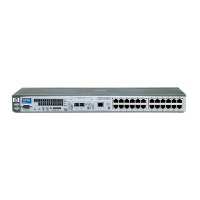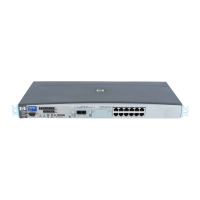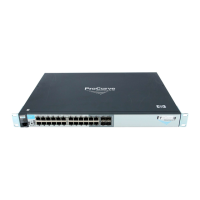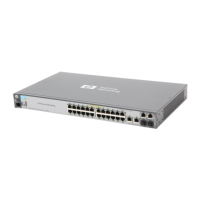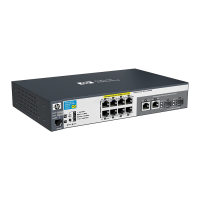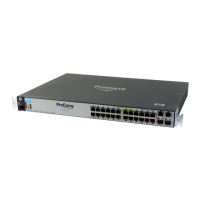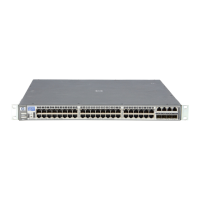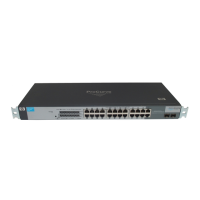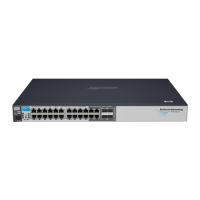4-21
Using the HP Web Browser Interface
Status Reporting Features
Using the HP Web Browser
Interface
Alert Types
The following table lists the types of alerts that can be generated.
Table 4-2. Alert Strings and Descriptions
Alert String Alert Description
First Time Install Important installation information for your switch.
Too many undersized/
giant packets
A device connected to this port is transmitting packets shorter than 64 bytes or longer than
1518 bytes (longer than 1522 bytes if tagged), with valid CRCs (unlike runts, which have invalid
CRCs).
Excessive jabbering A device connected to this port is incessantly transmitting packets (“jabbering”), detected as
oversized packets with CRC errors.
Excessive CRC/alignment
errors
A high percentage of data errors has been detected on this port. Possible causes include:
• Faulty cabling or invalid topology.
• Duplex mismatch (full-duplex configured on one end of the link, half-duplex configured on
the other)
• A malfunctioning NIC, NIC driver, or transceiver
Excessive late collisions Late collisions (collisions detected after transmitting 64 bytes) have been detected on this
port. Possible causes include:
• An overextended LAN topology
• Duplex mismatch (full-duplex configured on one end of the link, half-duplex configured on
the other)
• A misconfigured or faulty device connected to the port
High collision or drop rate A large number of collisions or packet drops have occurred on the port. Possible causes
include:
• A extremely high level of traffic on the port
• Duplex mismatch
• A misconfigured or malfunctioning NIC or transceiver on a device connected to this port
• A topology loop in the network
Excessive broadcasts An extremely high percentage of broadcasts was received on this port. This degrades the
performance of all devices connected to the port. Possible causes include:
• A network topology loop—this is the usual cause
• A malfunctioning device, NIC, NIC driver, or software package
Network Loop Network loop has been detected by the switch.
Loss of Link Lost connection to one or multiple devices on the port.
Loss of stack member The Commander has lost the connection to a stack member.
Security violation A security violation has occurred.
